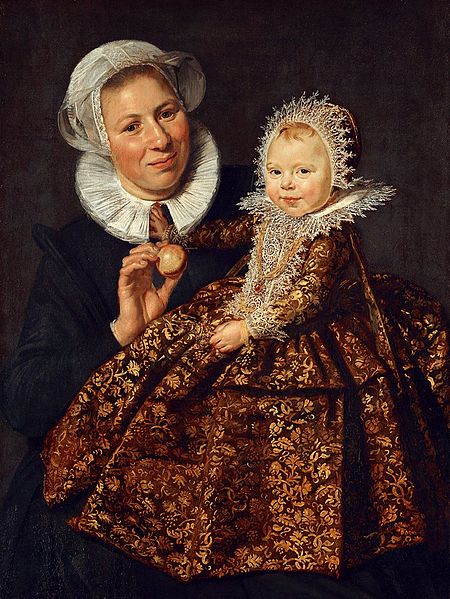
(Frans Hals, Catharina Hooft with her Nurse)
Hand, delicate like a bud stippled with spring dew, gently brushing off an apple- an equanimous dismissal of so radiant a temptation. For her heart is flooded with extreme merriment, such merriment that is ineffable for whatever form of expressions. I stare into the front, rigid my facial expressions into sheer solemnity and at pains to contain my fizzy exuberance. Why the stiffness of the dress always impedes the outburst of my inner joy?
She is told to reduce her smile into a mere smirk, as conforming to the ever-celebrated tradition of portraiture. I take yet another sigh of impatience and waiting for another flash of light, exploding straight before my face. My nurse holds an apple and is told to stage a performance of offering me the prop. I, doubtlessly, am supposed to convince the viewers that a reject of the apple is retorted. My nurse bundles through the dumb show, while I, being as adept as a good actor can be, fail to reveal any discomfort, except the slight droop of an eye.
Somebody prisoned her in a portrait, and forgot it altogether somewhere high above the mantelpiece. Viewers, you are not permitted to touch or hold but simply to possess the picture with your eyes. Your eyes of exuding lustiness penetrate not of my heart, which is callous and impassive like a mountain which is ever immobile. The spikiness of my adornment ironically parallels with my heart, whose sole wish is to be locked in an impregnable fortification.
I opted to be put in a portrait, I am obliged to say so without any tinge of regrets. They took away my soul and terminated my life for the sake of perpetual beauty, but they could hardly take away my gaze, which is now transfixing on you as sharp as the slant of light on a snowy morning, truncating a block of ice and leaving no vestige of clemency. This gaze shares the perpetuity of the preserved beauty.
Does her gaze show any hints of wanton entreatment? Some stared at the portrait so long that they felt they were drawn into it unconsciously. Some said her innocence was like a rose poising on a snow-encrusted street- the only thing endearing in comparison with the palpable dismalness. The viewers were thus deluded by the illusive beauty displayed before them. And the frozen portrait burns, like a fire visible in a darkened room, and a flame of blue it flickers.
Comments
Post a Comment